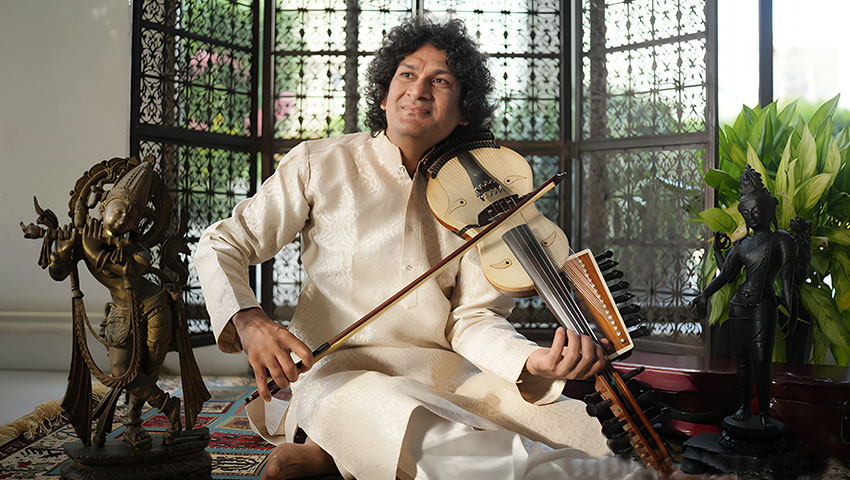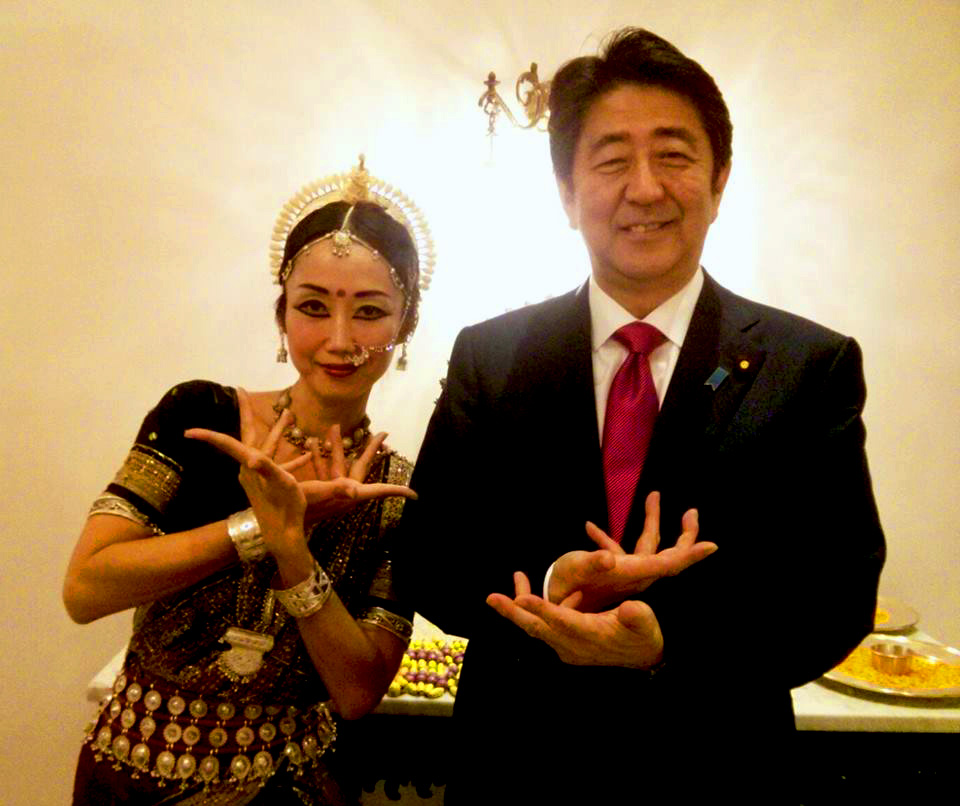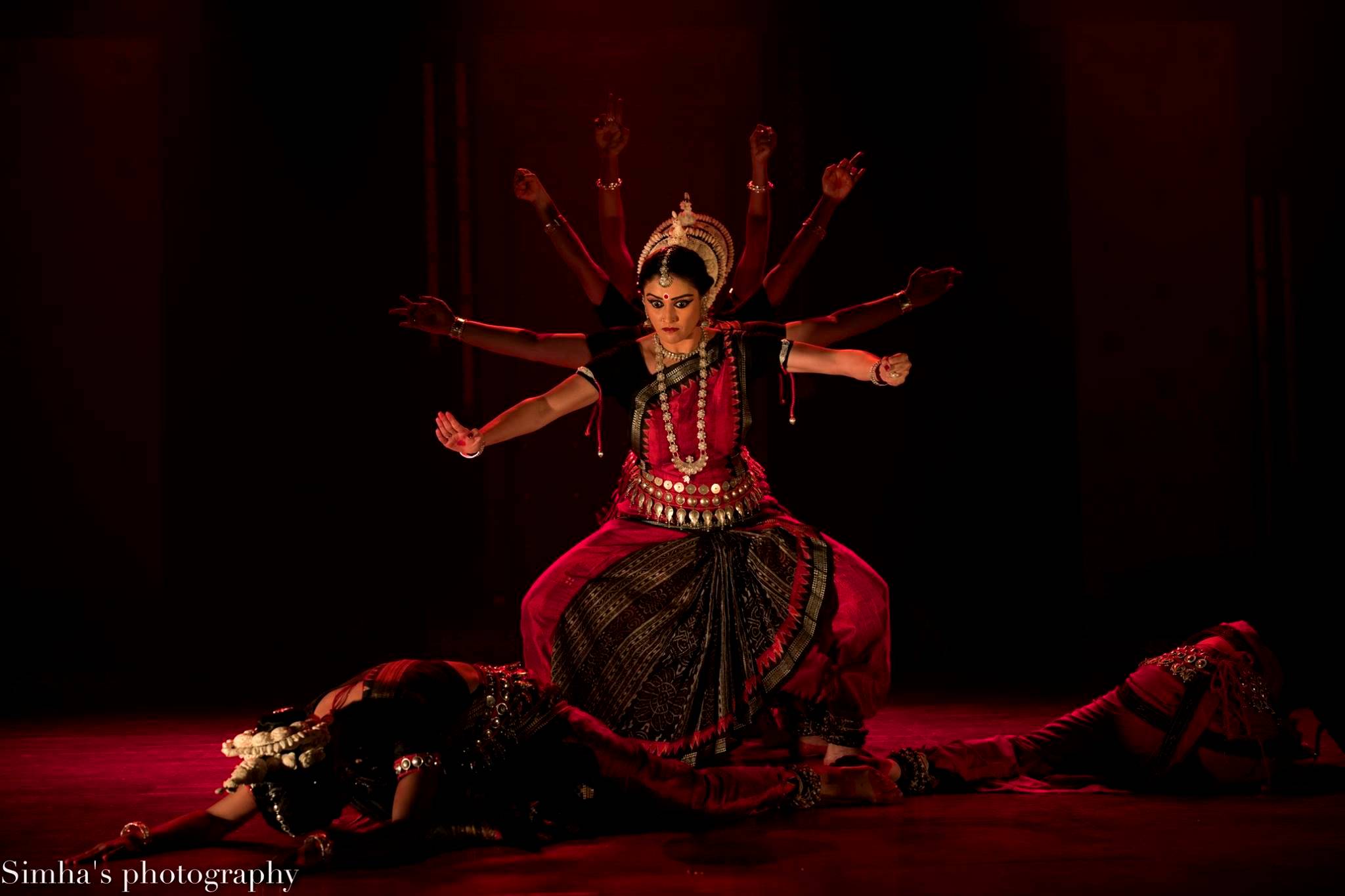सरस्वति महाभागे विद्ये कमललोचने । विद्यारूपे विशालाक्षि विद्यां देहि नमोऽस्तु ते ॥
Goddess Saraswati is just evoked in all performances through this complete strotra.
 The call of the deities associated with classical art forms is not a novel practice. Deities are supposed to be prayed by any performing musicians as they are venerated ones before each performance. Each layer of classical dance is laced with these poetic and prose references to the deities under the eagle eyes of connoisseurs whoever they try to deviate from their age-old tenants. But the matter is who has the ability to maintain classicism in art? Obviously, the gurus draw their repertoire to the massive treasure of traditional compositions based on ragas mostly in Sanskrit, Bhojpuri or Awadhi dialect.
The call of the deities associated with classical art forms is not a novel practice. Deities are supposed to be prayed by any performing musicians as they are venerated ones before each performance. Each layer of classical dance is laced with these poetic and prose references to the deities under the eagle eyes of connoisseurs whoever they try to deviate from their age-old tenants. But the matter is who has the ability to maintain classicism in art? Obviously, the gurus draw their repertoire to the massive treasure of traditional compositions based on ragas mostly in Sanskrit, Bhojpuri or Awadhi dialect.
The golden era of Wajid Ali Shah, the dancing Nawab of Hyderabad and his contemporary singers in Mughal India saw the assertion of these bandishes, kalams, and devotional bhajans in religious customs and performing arts. The syncretic culture of India arts blends so well in cultural spaces that even rulers and the practitioners of arts never could escape each other’s influence in creating compositions. You will find references for deities in many Muslim saint works and Allah in many Hindu musicians’ compositions. The boundaries of religion and its basis assimilates when creativity begins to soar to higher heights!
In such a scenario, classical music and dance are worth its high level of preservation. That’s the main premise on which it should be taught and savoured by young minds these days!
To maintain the parity and balance between the exodus of real and hyped is the aim of all creativity. Unified behaviours in artists bring forth their quality of work. If the influence of social media and lyricism is not matched a patched up culture will soon invade the Indian art psyche and the ancient arts and music will perish and die its natural death.
The fact is who should do the dirty job? The same generation that is exposed to Motion pictures and western culture so hard should also take up classical forms into their fold and put in the extra effort into the practice and presentation of their works. The guru and shishya should equally bear the weight. Strict riyaz, acquisition of techniques and adherence to the grammar of the art form is very essential for the work to be classy as well as of the highest pedagogic worth.









